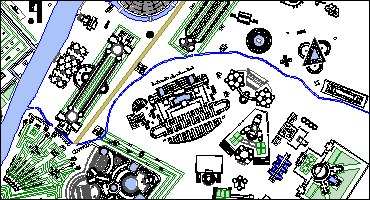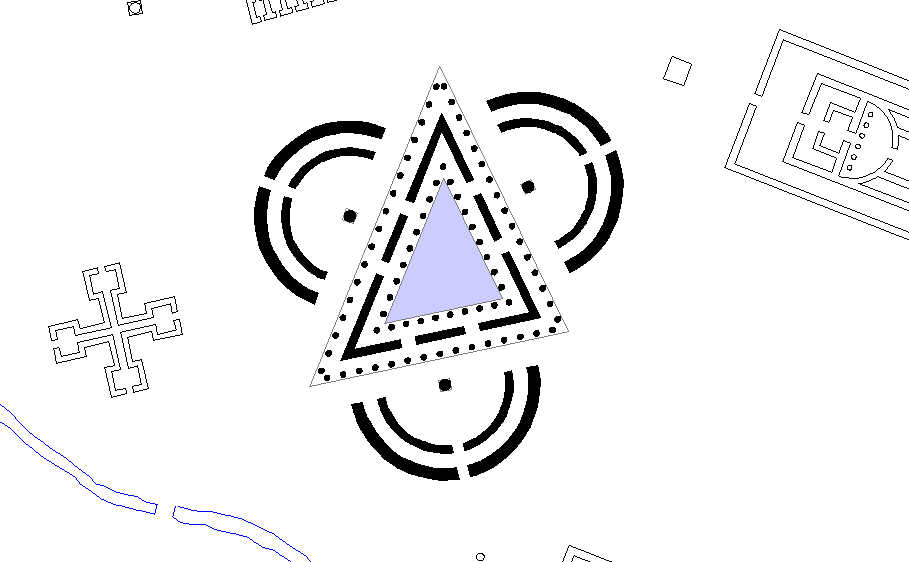Vincenzo Fasolo, "The Campo Marzio of G. B. Piranesi".
2691a
1956
Petronia Amnis
1998.12.01

The Petronia Amnis of the Ichnographia begins in the east and flows along the southern edge of the Hortulorum valley. Its northern bank in the valley contains the Sepulchrum Agrippae and the Sepulchrum Julii Ceasaris et Drusi, while its southern bank is the ridge of the hill on top of which is the Horti Lucullani and some Turres expugnandae (military assult towers). Eventually, the stream skirts the southern portion of the Equiria and the northern flank of the Bustum Augustii. Ultimately, the Petronia Amnis flows into the Tiber.
| |
The Petronia Amnis of the Ichnographia begins in the east within the valley of the Hortulorum, then skirts the northern flank of the Bustum Augustii, and eventually flows into the Tiber. Piranesi dislocates the Petronia Amnis from its original situation to a more northern position.
|
| |
Porticus Vipsania
1998.12.01
Piranesi's Porticus Vipsania does follow an internal logic within the overall scheme of the Ichnographia Campus Martius, however. It is situated alongside the Equiria, together with the Porticus a S.P.Q.R. Amoenitati Dicata and the Porticus Alexandri Severi, to accommodate the many spectators of the Equiria, the annual horse races in honor of Mars. Furthermore, the Porticus Vipsania sits at the head of a valley which contains the Sepulchrum Julii Caesaris et Drusi and the Sepulchrum Agrippae, thus adding still more to the porticus' civic importance. Even though Piranesi dislocates the Porticus Vipsania, he nonetheless positions it within a fitting symbolic context, and this wilfullness on Piranesi's part, moreover, is indicative of the widespread pattern throughout the Ichnographia whereby Piranesi's archeological mistakes are simultaneously discerning symbolic acts often with narrative intentions
|

